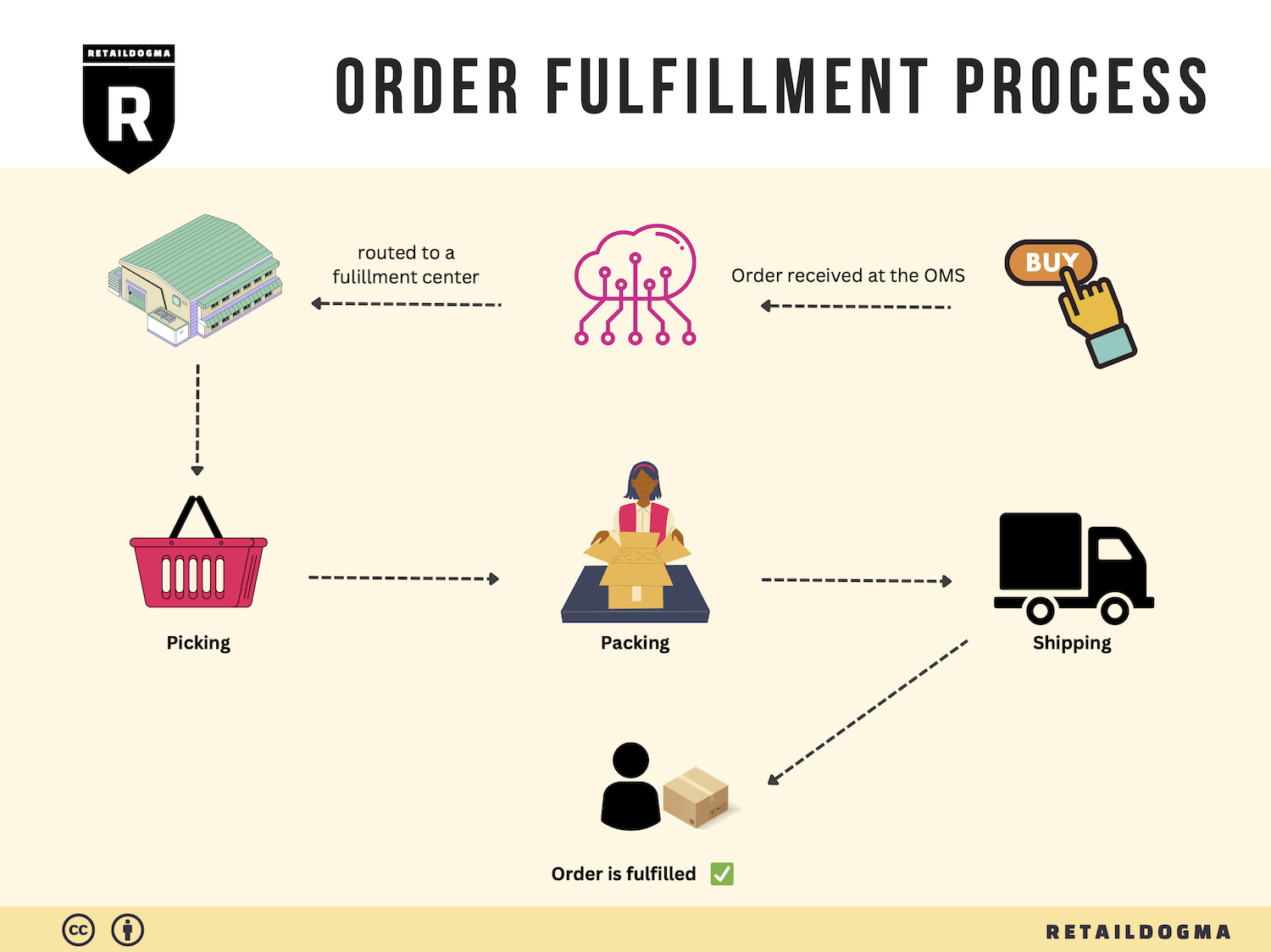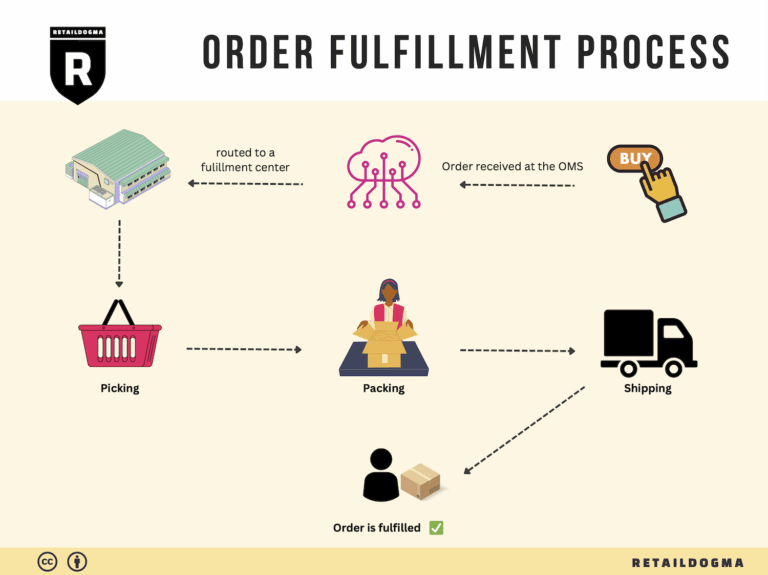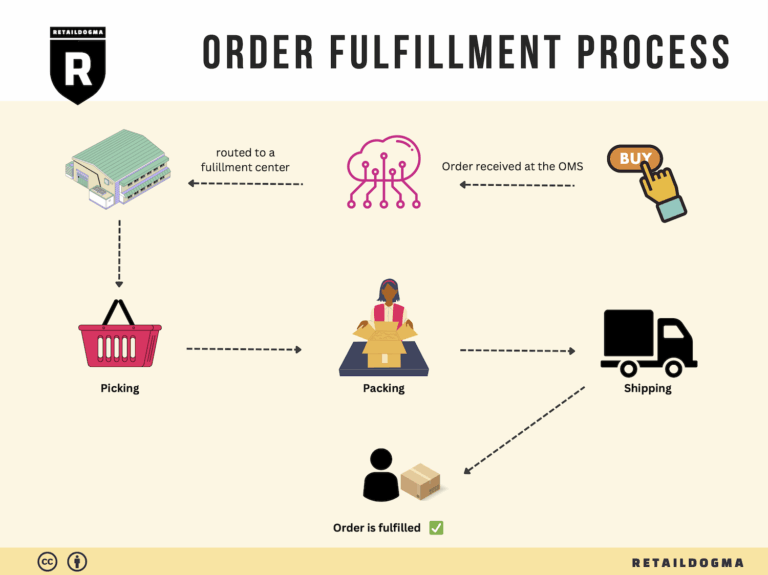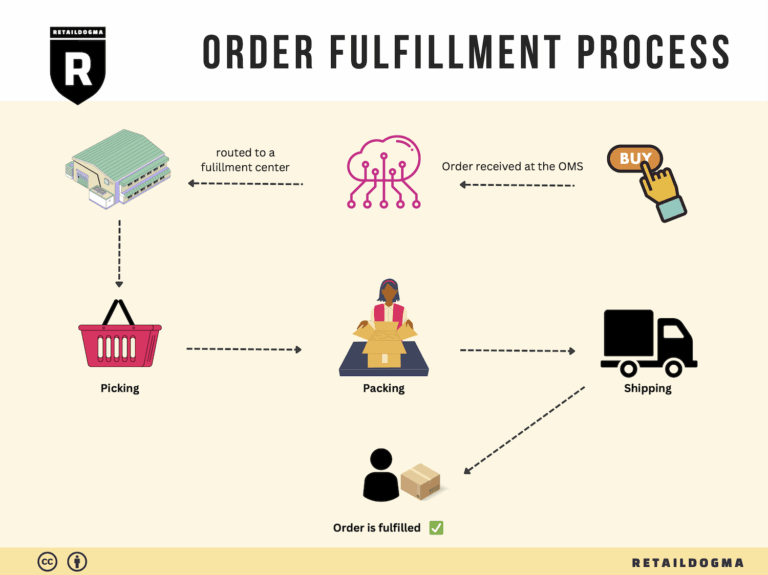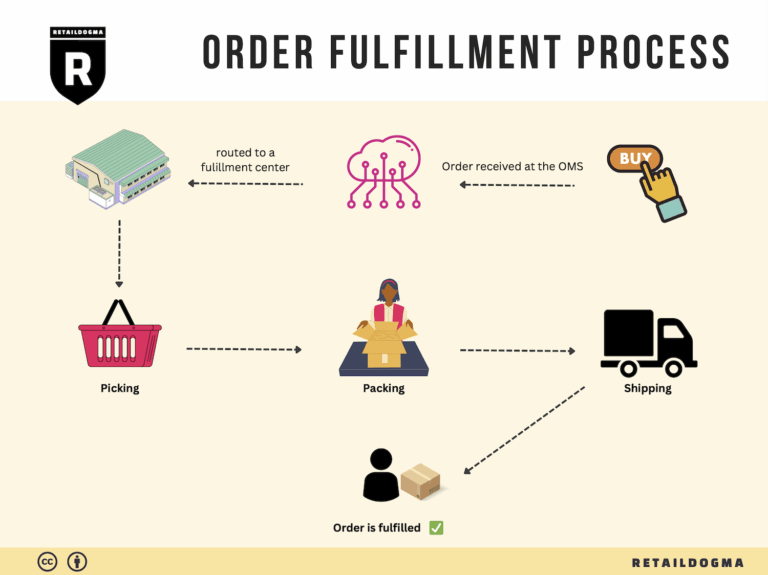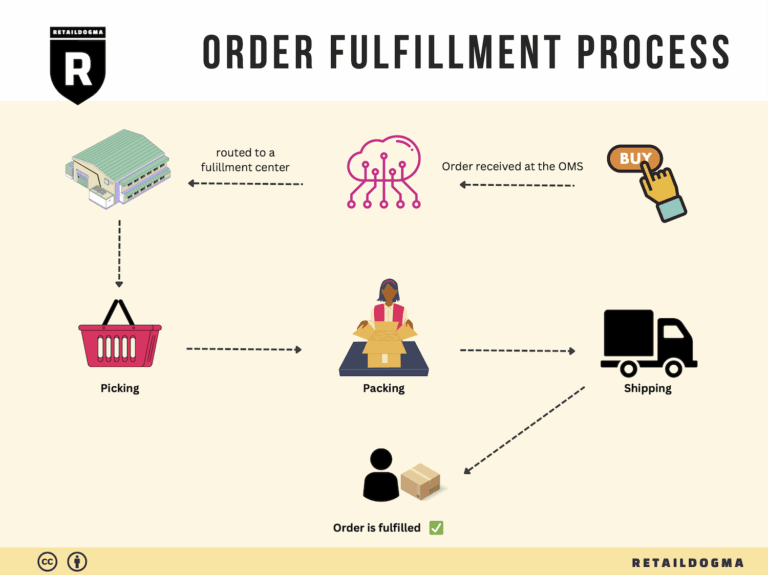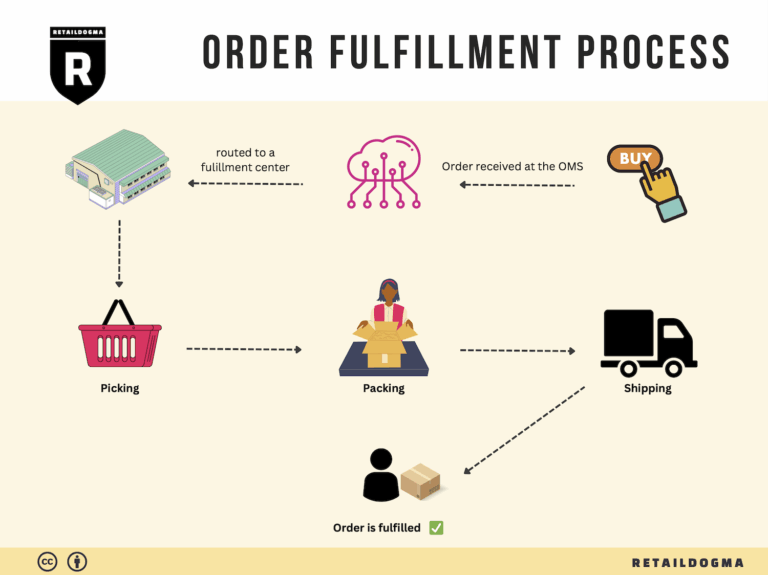What Is A Fulfillment Center? A Complete Guide (2025)
What is E-commerce Fulfillment? An Introduction for Growing Businesses
Understanding E-commerce Fulfillment
For many growing online businesses, the excitement of increasing sales can quickly become overshadowed by the daunting tasks of packing and shipping orders. As sales volumes rise, so do the complexities of ensuring that each product reaches the customer efficiently and on time. This is where e-commerce fulfillment comes into play.
E-commerce fulfillment is the comprehensive process of receiving, processing, and delivering products to customers. It encompasses everything from inventory management and order processing to packing and shipping. For entrepreneurs and operations managers, understanding this process is crucial for scaling their businesses without compromising on customer satisfaction.
In this guide, we will explore various fulfillment models available to e-commerce businesses, including Third-Party Logistics (3PL) and Fulfillment by Amazon (FBA). Each model has its own strengths and weaknesses, and selecting the right one can significantly impact your operational efficiency and overall customer experience.
We will break down the core services associated with e-commerce fulfillment, such as inventory storage, order processing, shipping, and returns management. Understanding these services will enable you to identify what best fits your business needs and customer expectations.
Choosing the right fulfillment partner is another critical step in the scaling process. We’ll provide insights into what to look for in a logistics partner, from technological capabilities and service offerings to pricing structures and customer support. This section will empower you to make informed decisions that align with your business goals.
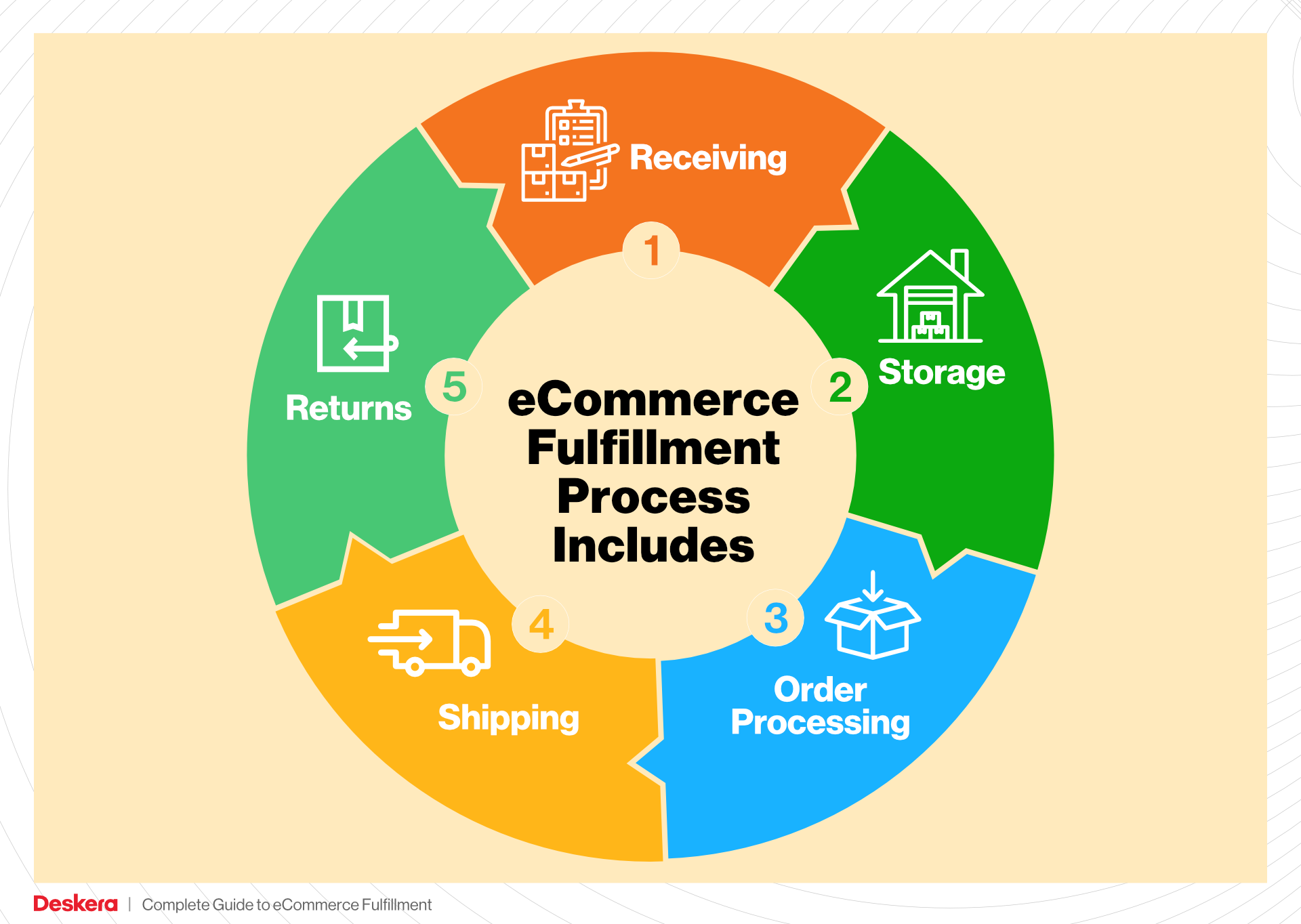
Speaking of pricing, we will also cover how to navigate the costs associated with fulfillment services. Understanding the pricing models can help you budget effectively and avoid unexpected expenses that can arise as you grow.
Ultimately, this guide aims to empower e-commerce business owners and operations managers to make smart, strategic decisions about their logistics. By demystifying the fulfillment process and providing actionable insights, we hope to alleviate some of the overwhelm associated with scaling your business. With the right knowledge and partner, you can focus on what you do best—growing your brand and delighting your customers.
What You’ll Learn In This Guide
- What is E-commerce Fulfillment? An Introduction for Growing Businesses
- The Order Fulfillment Process: From ‘Buy’ Button to Customer’s Door
- Comparing Fulfillment Models: In-House vs. 3PL vs. Dropshipping
- A Deep Dive into Amazon FBA: Pros, Cons, and Who It’s For
- Core Services Offered by Fulfillment Centers
- How to Choose a Fulfillment Partner: A 6-Point Checklist
- Understanding Fulfillment Pricing: A Breakdown of Common Fees
- Frequently Asked Questions (FAQs) about Fulfillment
- Conclusion: Is Outsourcing Fulfillment the Right Move for Your Business?
- Important Disclaimer
The Order Fulfillment Process: From ‘Buy’ Button to Customer’s Door
1. Receiving Inventory
The order fulfillment process begins with receiving inventory at the fulfillment center. When products arrive, they are checked against purchase orders to ensure accuracy in terms of quantity and condition. This step is crucial as it establishes the foundation for inventory management. Any discrepancies or damages must be recorded and addressed immediately to maintain a smooth workflow.
Key terms associated with this step include SKU (Stock Keeping Unit), which is a unique identifier for each product. SKUs help track inventory levels and facilitate efficient organization within the warehouse. By effectively managing SKUs during the receiving process, businesses can minimize stockouts and overstock situations, which ultimately enhances customer satisfaction and operational efficiency.
2. Warehouse Storage
Once inventory is received and verified, the next step is warehouse storage. Products are organized and placed in designated locations within the fulfillment center. This organization can vary based on factors such as product size, weight, and sales velocity. Efficient storage systems, such as FIFO (First In, First Out) or LIFO (Last In, First Out), are implemented to ensure that older stock is sold before newer stock, reducing the risk of obsolescence.
Proper storage is vital because it directly impacts the efficiency of subsequent steps in the fulfillment process. Well-organized inventory allows for quicker order picking and minimizes the time spent locating items. Businesses that optimize their warehouse layout and storage methods can significantly reduce operational costs and improve turnaround times for customer orders.
3. Order Picking
Order picking is the process of selecting items from the warehouse to fulfill customer orders. This step often involves the use of pick lists, which outline the specific items and quantities needed for each order. Efficient order picking is critical because it directly influences the speed and accuracy of order fulfillment.
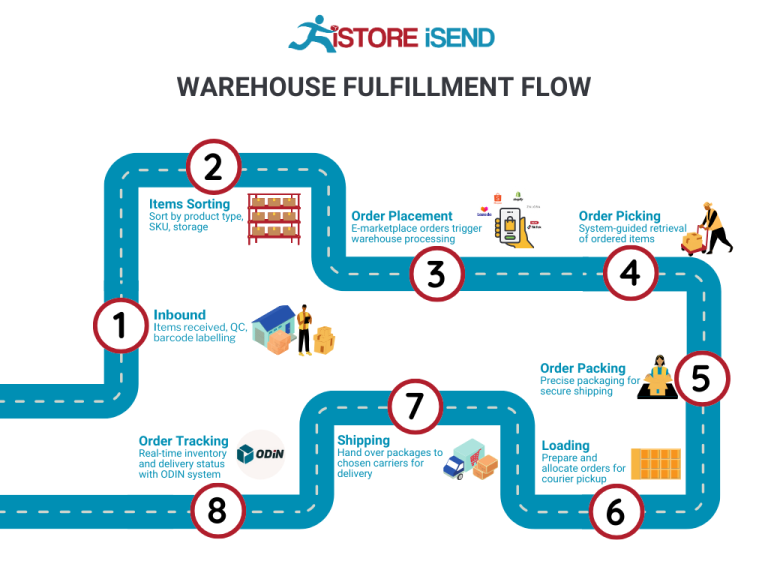
There are several picking methods available, including single order picking, batch picking, and zone picking. Each method has its advantages and can be selected based on the fulfillment center’s volume and order complexity. Effective order picking not only speeds up the fulfillment process but also reduces the likelihood of errors, which can lead to customer dissatisfaction and increased return rates.
4. Order Packing
After items are picked, they move on to the order packing stage. Here, products are carefully packed into shipping boxes or envelopes, ensuring they are protected during transit. This step is crucial for maintaining product integrity and enhancing the customer experience. Businesses often utilize packing slips that accompany the order, providing customers with details about their purchase.
Proper packing techniques can reduce shipping costs and minimize the risk of damage during transportation. Employing packing materials such as bubble wrap or biodegradable fillers can further protect items while also aligning with sustainable practices. A well-executed packing process not only safeguards products but also reflects a brand’s commitment to quality, which can lead to repeat business and positive reviews.
5. Shipping & Delivery
The final step in the order fulfillment process is shipping and delivery. Once orders are packed, they are labeled and handed over to shipping carriers for delivery to customers. This stage is essential as it determines the final customer experience. Timely and accurate shipping can significantly enhance customer satisfaction and loyalty.
Key terms related to this step include last-mile delivery, which refers to the final leg of the shipping journey from the distribution center to the customer’s doorstep. Efficient last-mile delivery is increasingly important in e-commerce, as it affects delivery times and overall service quality. Businesses should consider partnering with reliable carriers and utilizing tracking systems to provide customers with real-time updates on their orders. By optimizing shipping and delivery processes, companies can enhance their reputation and drive future sales.
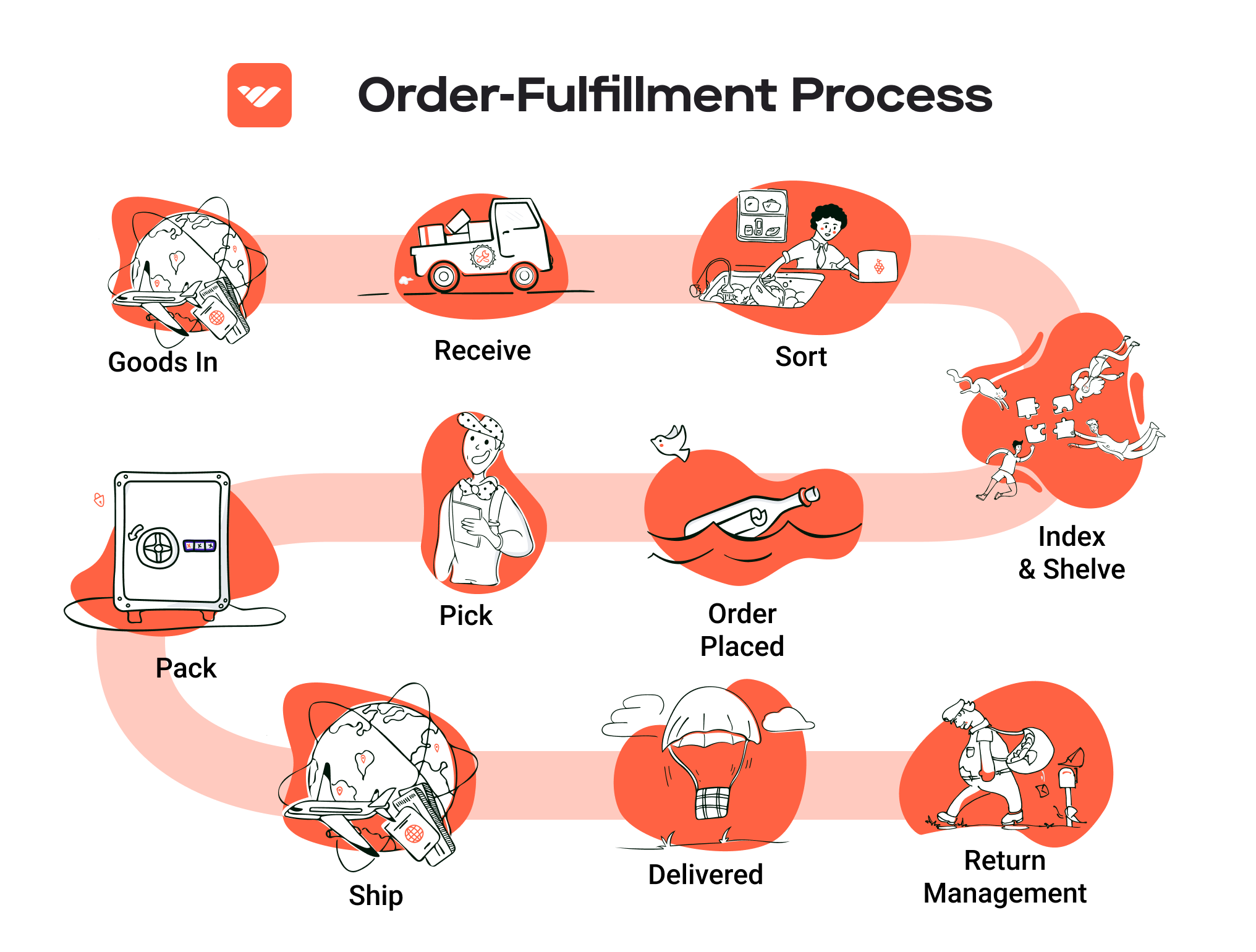
In summary, each step of the order fulfillment process plays a vital role in ensuring that products move efficiently from the moment a customer clicks the “Buy” button to the time their order arrives at their door. By focusing on optimizing each stage—receiving inventory, warehouse storage, order picking, order packing, and shipping & delivery—e-commerce businesses can scale effectively and enhance their operational performance.
Comparing Fulfillment Models: In-House vs. 3PL vs. Dropshipping
Fulfillment Model Comparison
| Model | Who Handles Inventory | Best For (Business Stage) | Key Advantage | Key Disadvantage |
|---|---|---|---|---|
| In-House Fulfillment | The business itself | Startups to established | Full control over operations | High overhead costs |
| Third-Party Logistics (3PL) | An external logistics provider | Scaling businesses | Scalability and expertise | Less control over inventory |
| Dropshipping | Suppliers | New and small businesses | Low upfront investment | Lower profit margins |
In-House Fulfillment
In-house fulfillment involves managing the entire logistics process within your own facilities. This model is often preferred by businesses that want total control over their inventory and fulfillment operations. Companies that choose in-house fulfillment typically own their warehousing space, hire staff, and oversee every aspect of order processing. This approach allows for tailored solutions to meet specific customer needs, resulting in potentially superior customer service. However, this model also entails significant overhead costs, including rent, utilities, labor, and equipment. Additionally, as the business scales, the challenges of managing increased inventory and shipping demands can strain resources. For startups and smaller businesses, in-house fulfillment can be a viable option, but as order volumes grow, it may become less practical compared to other models.
Third-Party Logistics (3PL)
Third-party logistics (3PL) providers offer a comprehensive suite of services including warehousing, order fulfillment, inventory management, and shipping. Businesses can partner with a 3PL to leverage their expertise and technology, which is especially beneficial for companies looking to scale quickly without the burden of managing logistics themselves. 3PLs can handle seasonal fluctuations in demand, allowing businesses to remain agile. Furthermore, they often have established relationships with carriers, enabling cost-effective shipping solutions. The primary drawback of using a 3PL is the loss of direct control over inventory and fulfillment processes, which can lead to inconsistencies in service quality if the 3PL does not align with the business’s standards. Businesses that are in a growth phase or looking to expand their market reach without significant upfront investment may find 3PL services to be a strategic advantage.
Dropshipping
Dropshipping is a fulfillment method where the retailer does not keep goods in stock. Instead, when a customer makes a purchase, the retailer purchases the item from a third party—usually a wholesaler or manufacturer—who then ships it directly to the customer. This model is particularly appealing for new and small businesses because it requires minimal upfront investment in inventory and allows entrepreneurs to test market demand for products without significant financial risk. Additionally, dropshipping can streamline operations as the retailer does not handle the physical products. However, the key disadvantage is that profit margins can be lower due to reliance on suppliers and potential shipping delays, which can affect customer satisfaction. Moreover, since the retailer has no control over inventory levels or shipping times, managing customer expectations can be challenging. For businesses that are just starting or want to offer a wide range of products without the financial burden of inventory, dropshipping can be an effective strategy.
Conclusion
Choosing the right fulfillment model depends on the unique needs and growth stage of your business. In-house fulfillment offers control but comes with high costs, while 3PL provides scalability and expertise at the expense of some control. Dropshipping minimizes risk and investment but can lead to lower profit margins and potential service inconsistencies. Evaluating your business goals, customer expectations, and operational capabilities is essential to select the most effective fulfillment strategy for your e-commerce operations.
A Deep Dive into Amazon FBA: Pros, Cons, and Who It’s For
Understanding Fulfillment by Amazon (FBA)
Fulfillment by Amazon (FBA) is a service offered by Amazon that allows sellers to store their products in Amazon’s fulfillment centers. Amazon takes care of storage, packaging, and shipping, as well as customer service and returns. This service enables sellers to leverage Amazon’s vast logistics network, providing a seamless shopping experience for customers while allowing sellers to focus on growing their businesses.
How FBA Works
-
Product Listing: Sellers create product listings on Amazon and specify that they will use FBA.
-
Inventory Shipment: Sellers send their products to Amazon’s fulfillment centers. Amazon provides guidance on how to prepare and package products for shipment.
-
Storage: Once the products arrive, they are stored in Amazon’s warehouses. Sellers can monitor their inventory levels through Amazon Seller Central.
-
Order Fulfillment: When a customer places an order, Amazon picks, packs, and ships the product directly to the customer. This process ensures fast and reliable delivery.
-
Customer Service: Amazon handles customer inquiries and returns, allowing sellers to save time and resources.
-
Reporting and Analytics: Sellers have access to data analytics tools through Seller Central to track sales performance, inventory levels, and customer feedback.
Pros of Fulfillment by Amazon (FBA)
-
Prime Eligibility: Products fulfilled by Amazon are automatically eligible for Amazon Prime, which attracts more customers due to the promise of fast, free shipping. This can significantly increase sales, as Prime members tend to prefer products that are eligible for their membership benefits.
-
Customer Trust: Selling through Amazon’s platform provides an inherent level of trust. Customers often feel more secure purchasing from Amazon, which can enhance conversion rates for sellers. The Amazon brand is synonymous with reliability, and this can boost a seller’s credibility.
-
Multi-Channel Fulfillment: FBA is not limited to Amazon.com. Sellers can utilize FBA to fulfill orders from other sales channels such as eBay, Shopify, and their own websites. This flexibility allows businesses to streamline operations and manage inventory more effectively across multiple platforms.
-
Scalability: FBA allows sellers to scale their operations without the burden of managing logistics. As sales grow, sellers can send more inventory to Amazon without needing to invest in their own warehousing and fulfillment infrastructure.
-
Automation and Efficiency: Amazon’s advanced technology and logistics capabilities automate many aspects of order fulfillment. This efficiency can lead to faster processing times and reduced human error, enhancing the overall customer experience.
Cons of Fulfillment by Amazon (FBA)
-
High Fees: While FBA can simplify logistics, it comes at a cost. Sellers must pay various fees, including storage fees and fulfillment fees per unit. These costs can add up, especially for low-margin products, and may eat into profitability.
-
Strict Inventory Rules: Amazon has specific requirements for inventory management, including labeling and packaging standards. Non-compliance can lead to additional fees or even inventory being returned to sellers. This can be particularly challenging for sellers who are new to the platform.
-
Commingling Risks: FBA utilizes a commingling inventory model, meaning that products from different sellers can be stored together. This can lead to potential issues if a seller’s product is returned or if there are quality control problems. Sellers may find themselves facing negative reviews or returns that were not their fault.
-
Loss of Control: By outsourcing fulfillment to Amazon, sellers give up some control over the customer experience. This can include packaging, shipping times, and customer service interactions. Any negative experiences caused by Amazon’s handling of orders can reflect poorly on the seller.
-
Inventory Limits: Amazon imposes limits on how much inventory sellers can send to its fulfillment centers. These limits are based on a seller’s sales history and can restrict the ability to scale quickly, especially for seasonal or trending products.
Who is FBA Best For?
Fulfillment by Amazon is particularly beneficial for:
-
Small to Medium-Sized Businesses: Companies that may not have the resources to manage their own logistics can leverage FBA for streamlined operations.
-
E-commerce Entrepreneurs: Those looking to start an online business without the upfront investment in warehousing and fulfillment infrastructure can find FBA an attractive option.
-
Brands Seeking Scale: Sellers who are experiencing growth and need to scale operations quickly can benefit from the logistics support that FBA provides.
-
Sellers with High Sales Volume: Businesses that sell in high volumes can take advantage of the efficiencies offered by FBA, as the cost per unit may decrease with higher sales.
-
Multi-Channel Sellers: Brands selling on multiple platforms can utilize FBA to simplify order fulfillment across channels, making it easier to manage inventory.
In conclusion, while FBA offers numerous advantages in terms of speed, efficiency, and customer trust, it also presents challenges, particularly in terms of fees and inventory management. Sellers should carefully evaluate whether FBA aligns with their business model and growth strategies before committing to the program.
Core Services Offered by Fulfillment Centers
Inventory Management & Warehousing
Fulfillment centers provide comprehensive inventory management and warehousing solutions designed to streamline the logistics of e-commerce businesses. This service entails the storage of products in a secure, organized environment, where inventory levels are monitored in real-time using advanced software systems.
The benefits of effective inventory management are manifold. First, it allows e-commerce businesses to maintain optimal stock levels, reducing the risk of stockouts or overstock situations. By utilizing a fulfillment center, businesses can leverage sophisticated inventory tracking systems that automatically update stock levels as orders are processed. This helps in making informed purchasing decisions, ultimately leading to better cash flow management.
Additionally, fulfillment centers often provide climate-controlled storage options for sensitive products, ensuring that items like electronics or perishables are kept in optimal conditions. This not only protects the quality of the products but also enhances customer satisfaction by ensuring that items arrive in perfect condition.
Pick and Pack Services
The pick and pack service is a core function of fulfillment centers, involving the selection (or “picking”) of items from inventory and their preparation (“packing”) for shipment to customers. Once an order is placed, fulfillment center staff locate the items in the warehouse, pack them according to best practices (including protective materials), and label them for shipping.
This service provides significant advantages for e-commerce businesses. It drastically reduces the time and labor costs associated with order fulfillment, allowing businesses to scale operations without proportionally increasing overhead. Moreover, fulfillment centers often employ advanced technology, such as barcode scanning and automated packing systems, which enhance accuracy and efficiency in order processing.
Outsourcing pick and pack services enables businesses to focus on their core competencies—such as marketing and product development—while ensuring that orders are fulfilled accurately and promptly. This capability can lead to improved customer satisfaction and repeat purchases, which are vital for long-term success in e-commerce.
Kitting and Assembly
Kitting and assembly services involve the grouping of individual items into ready-to-sell packages, often customized based on specific customer needs or promotional strategies. This can include bundling products together or assembling items that require multiple components to create a complete product.
For e-commerce businesses, the benefits of kitting and assembly are substantial. First, it allows for the creation of unique product offerings that can differentiate a brand in a crowded market. For example, a company could offer a gift set that includes multiple related products, enhancing perceived value and encouraging higher sales.
Additionally, kitting and assembly can simplify inventory management and reduce handling costs. By shipping bundled products, businesses can often reduce the number of shipments and packaging materials needed, leading to lower shipping costs and a smaller environmental footprint. This service is particularly beneficial for seasonal promotions or limited-time offers, where businesses need to quickly adapt their offerings without overhauling their entire inventory management system.
Returns Management (Reverse Logistics)
Returns management, also known as reverse logistics, is a critical service provided by fulfillment centers that handles the process of returned goods. This service encompasses the logistics of receiving, inspecting, restocking, or disposing of returned items, which can be a complex and resource-intensive process for e-commerce businesses.
Implementing an effective returns management system can significantly enhance customer satisfaction and brand loyalty. Fulfillment centers can streamline the returns process by providing customers with easy return labels and clear instructions, ensuring that the return experience is as hassle-free as possible. This is particularly important in the e-commerce sector, where consumers expect straightforward return policies.
Moreover, a well-managed returns process allows businesses to recover valuable inventory quickly. Fulfillment centers can inspect returned items and determine whether they can be restocked or need to be repaired or disposed of. This capability not only helps to minimize losses from returned merchandise but also provides valuable data about product quality and customer preferences, informing future product development and inventory decisions.
In summary, the core services offered by fulfillment centers—inventory management and warehousing, pick and pack services, kitting and assembly, and returns management—are essential for e-commerce businesses looking to scale operations efficiently. By leveraging these services, businesses can focus on growth strategies while ensuring that their logistics processes are optimized for speed, accuracy, and customer satisfaction.
How to Choose a Fulfillment Partner: A 6-Point Checklist
Location & Warehouse Network
Importance:
The geographical location of your fulfillment partner’s warehouses directly impacts shipping times and costs. A strategically located fulfillment center can reduce transit times to your customers, enhance shipping efficiency, and potentially lower freight costs.
Key Questions to Ask:
– Where are your fulfillment centers located, and how does that align with my customer base?
– What is your average shipping time to key regions?
– Can you provide insights on your distribution network and how it can support my growth?
Technology & Integrations
Importance:
In today’s digital landscape, robust technology and seamless integration with your e-commerce platforms are crucial. Your fulfillment partner should have a user-friendly interface and systems that integrate with your inventory management, CRM, and sales platforms.
Key Questions to Ask:
– What technology do you use for inventory management, order processing, and tracking?
– How easily can your systems integrate with my existing e-commerce platforms (like Shopify, WooCommerce, etc.)?
– Do you offer real-time inventory updates and reporting tools? If so, how frequently are they updated?
Specializations (e.g., Cold Storage, Oversized Items)
Importance:
Different businesses have unique storage and handling needs. If your products require specific conditions (like temperature control for perishables) or special handling (like oversized items), it’s vital to choose a partner with the necessary facilities and expertise.
Key Questions to Ask:
– Do you have specialized storage options, such as climate-controlled environments or facilities for oversized items?
– What experience do you have with my type of products?
– How do you manage inventory for specialized items to ensure quality and compliance?
Scalability & Capacity
Importance:
As your business grows, your fulfillment partner should be able to scale operations accordingly. Whether it’s handling increased order volumes during peak seasons or expanding to new markets, your partner should have the capacity to adapt to your changing needs.
Key Questions to Ask:
– How do you handle seasonal fluctuations in order volume?
– What is your current capacity, and how do you plan to scale in the future?
– Can you provide examples of how you’ve successfully scaled for other clients?
Pricing and Contracts
Importance:
Understanding the pricing structure and contract terms is essential to avoid unexpected costs. Transparent pricing will help you budget effectively and assess the overall value of the partnership.
Key Questions to Ask:
– What is your pricing model (e.g., per order, per item, monthly fees)?
– Are there any hidden fees (e.g., storage fees, picking and packing charges)?
– What are the terms of the contract, and how flexible are they if my needs change?
Customer Support & Reviews
Importance:
Reliable customer support can make or break your fulfillment experience. A partner that offers proactive support and has a solid reputation will help ensure smooth operations and quick resolutions to any issues that arise.
Key Questions to Ask:
– What customer support channels do you offer (e.g., phone, email, chat)?
– What are your average response times for support inquiries?
– Can you provide references or case studies from current clients in my industry?
Conclusion
Choosing the right fulfillment partner is a critical decision that can significantly impact your e-commerce business. By following this checklist and asking the right questions, you can make an informed choice that aligns with your operational needs and growth objectives. Prioritize your specific requirements, and seek a partner that not only meets your current demands but can also support your future growth.
Understanding Fulfillment Pricing: A Breakdown of Common Fees
Initial Setup Fees
When partnering with a fulfillment center like Amazon’s BNA3, businesses often encounter initial setup fees. These fees are typically charged to establish your account, integrate your inventory management systems, and customize the services to meet your specific needs. The setup process may involve creating product listings, configuring shipping options, and setting up reporting tools.
Calculation: Initial setup fees can vary significantly based on the complexity of your operations and the specific services you require. It’s essential to understand whether these fees are one-time or recurring and to clarify any additional costs associated with special configurations or integrations.
Receiving Fees
Receiving fees are charged when your products arrive at the fulfillment center. This fee covers the labor and resources needed to unload, inspect, and store your inventory. Efficient receiving processes are crucial for minimizing delays and ensuring your products are ready for sale as quickly as possible.
Calculation: These fees are typically calculated per unit received or based on the total weight of the shipment. For example, if you send a pallet of goods, you may be charged a flat fee per pallet or a fee based on the total number of items. Be sure to inquire if there are additional costs for special handling or inspection requirements.
Storage Fees (per pallet/bin)
Storage fees apply to the inventory you have stored within the fulfillment center. These fees are incurred for the physical space your products occupy and are generally charged monthly. Storage fees can vary based on the time of year, with peak seasons (like holidays) often resulting in higher fees due to increased demand for space.
Calculation: Storage fees are usually calculated on a per-pallet or per-bin basis. For instance, if your products take up two pallets, you would be charged a fee based on that number. It’s important to ask about tiered pricing structures that may apply if you exceed certain volume thresholds, as well as any potential discounts for long-term storage commitments.
Pick & Pack Fees (per item/order)
Pick and pack fees are charged for the labor involved in retrieving items from storage and preparing them for shipment. This process includes picking the items, packing them securely, and labeling them for delivery. Efficient pick and pack operations are vital for maintaining customer satisfaction through timely and accurate order fulfillment.
Calculation: These fees can be structured in various ways: per item, per order, or a combination of both. For example, you might pay a flat fee for every order processed, plus an additional fee for each item picked. It’s crucial to understand the specifics of how these fees are calculated, especially if your product line has variations in size or weight that could impact packing complexity.
Shipping Fees
Shipping fees are incurred when your products are sent from the fulfillment center to your customers. These fees cover the costs associated with transporting goods, including postage, packaging, and any additional handling required.
Calculation: Shipping fees can be influenced by several factors, including the destination, shipping method (standard vs. expedited), and the total weight or dimensions of the shipment. Many fulfillment centers offer discounted shipping rates through partnerships with carriers, so it’s beneficial to explore these options. Also, consider any surcharges that may apply during peak seasons or for specific delivery conditions.
Tips for Getting an Accurate Quote
To ensure you receive an accurate quote from a fulfillment center like BNA3, consider the following tips:
-
Provide Detailed Information: Be clear about your product types, volumes, and any special handling requirements. The more information you provide, the more accurate your quote will be.
-
Ask About Pricing Structures: Inquire whether fees are fixed, variable, or based on volume thresholds. Understanding the pricing model helps you anticipate costs better.
-
Consider Long-Term Partnerships: If you plan to scale your business, discuss potential discounts or benefits for long-term commitments. Many fulfillment centers offer better rates for higher volumes or extended contracts.
-
Evaluate Additional Services: If you need extra services such as kitting, labeling, or custom packaging, ensure these are included in your quote.
-
Review Terms and Conditions: Make sure to read through the fine print regarding fee structures, potential surcharges, and cancellation policies to avoid unexpected costs later.
By understanding these common fulfillment pricing models and following the outlined tips, e-commerce businesses can make informed decisions that align with their operational needs and budgetary constraints.
Frequently Asked Questions (FAQs) about Fulfillment
1. What is the BNA3 Amazon Fulfillment Center?
The BNA3 Amazon Fulfillment Center is located at 2020 Joe B. Jackson Parkway in Murfreesboro, TN. It is part of Amazon’s vast network of fulfillment centers designed to store and distribute products efficiently to meet customer demands. This center plays a crucial role in processing orders, managing inventory, and ensuring timely delivery across the Nashville metropolitan area and beyond.
2. How does the BNA3 Fulfillment Center operate?
The BNA3 Fulfillment Center utilizes advanced technology and a highly organized workflow to manage the storage, picking, packing, and shipping of products. Orders placed by customers are processed through a series of automated systems and human efforts to ensure accuracy and speed, leveraging Amazon’s fulfillment network for optimal logistics.
3. What services does the BNA3 Fulfillment Center offer?
The BNA3 Fulfillment Center primarily offers services related to Amazon’s Fulfillment by Amazon (FBA) program. This includes inventory storage, order fulfillment, returns processing, and customer service support. Sellers can leverage these services to enhance their sales capabilities on Amazon’s platform without managing their own logistics.
4. What’s the difference between a warehouse and a fulfillment center?
A warehouse is primarily a storage facility where goods are kept until they are needed. In contrast, a fulfillment center is designed specifically for processing customer orders, including picking, packing, and shipping products directly to consumers. Fulfillment centers focus on speed and efficiency to meet customer expectations for quick delivery.
5. What is a 3PL?
A 3PL, or Third-Party Logistics provider, is a service that allows businesses to outsource their logistics and supply chain management. This can include warehousing, transportation, and fulfillment services. By partnering with a 3PL like Amazon Fulfillment Centers, businesses can streamline their operations and focus on core activities such as sales and marketing.
6. How much do fulfillment services cost?
Costs for fulfillment services can vary widely based on several factors, including storage fees, order processing fees, and shipping costs. At Amazon’s fulfillment centers, costs may also depend on the size and weight of the products, as well as the shipping speed chosen by the seller. It’s essential for businesses to analyze these costs to determine the most cost-effective fulfillment strategy.
7. Can I use the BNA3 Fulfillment Center for my own e-commerce store?
Yes, businesses can utilize the BNA3 Fulfillment Center through Amazon’s Fulfillment by Amazon (FBA) program. This allows sellers to store their products at the fulfillment center and have Amazon handle the logistics of order fulfillment, enabling them to focus on growing their e-commerce business.
8. How do I send my products to the BNA3 Fulfillment Center?
To send products to the BNA3 Fulfillment Center, you need to create an FBA account on Amazon Seller Central. From there, you can generate shipping plans, label your products appropriately, and follow Amazon’s guidelines for sending inventory to the center. Ensure your products are packaged correctly to prevent damage during transit.
9. What are the advantages of using the BNA3 Fulfillment Center?
Using the BNA3 Fulfillment Center offers several advantages, including access to Amazon’s extensive logistics network, faster delivery times to customers, and the ability to scale your business without investing heavily in warehousing and staff. Additionally, sellers benefit from Amazon’s customer service and return handling.
10. What challenges might I face when using the BNA3 Fulfillment Center?
While there are many benefits, challenges may include navigating Amazon’s policies and fees, managing inventory levels to avoid stockouts or overstock, and dealing with potential delays during peak seasons. It’s crucial for businesses to stay informed about operational updates and maintain clear communication with Amazon to mitigate these challenges.
Conclusion: Is Outsourcing Fulfillment the Right Move for Your Business?
The Case for Outsourcing Fulfillment
As e-commerce businesses strive for growth, outsourcing fulfillment can be a game-changing strategy. By leveraging a fulfillment service, such as those offered at Amazon Fulfillment Centers, businesses can save valuable time that would otherwise be spent on logistics management. This allows you to focus on core activities like product development and marketing, ultimately driving sales and enhancing customer experience.
Scalability is another significant advantage of outsourcing fulfillment. As your order volume fluctuates, a fulfillment partner can adapt to these changes without the need for extensive investments in infrastructure or labor. This flexibility ensures that you can respond to market demands swiftly, whether it’s ramping up during peak seasons or scaling down in quieter periods.
Moreover, fulfillment centers bring expertise that can optimize your operations. They often utilize advanced technology and best practices in logistics, inventory management, and shipping. This not only improves efficiency but also reduces errors and enhances the overall reliability of your supply chain. With a partner who understands the intricacies of fulfillment, you can achieve faster delivery times and improve customer satisfaction.
However, the success of outsourcing fulfillment hinges on selecting the right partner. It’s crucial to assess potential providers based on their capabilities, geographic reach, and technology integration. A misaligned partnership can lead to inefficiencies that negate the benefits of outsourcing.
Call to Action
To determine if outsourcing fulfillment is the right step for your business, conduct a thorough audit of your current shipping processes. Identify pain points, inefficiencies, and areas where a fulfillment partner could add value. By understanding your logistics needs, you can make an informed decision that aligns with your growth strategy. Embrace the opportunity to streamline your operations and focus on what matters most: scaling your business.
Important Disclaimer
⚠️ Important Disclaimer
The information in this guide is for educational purposes. Fulfillment services, pricing, and platform features change frequently. Always conduct your own due diligence and consult with providers directly before making business decisions.
